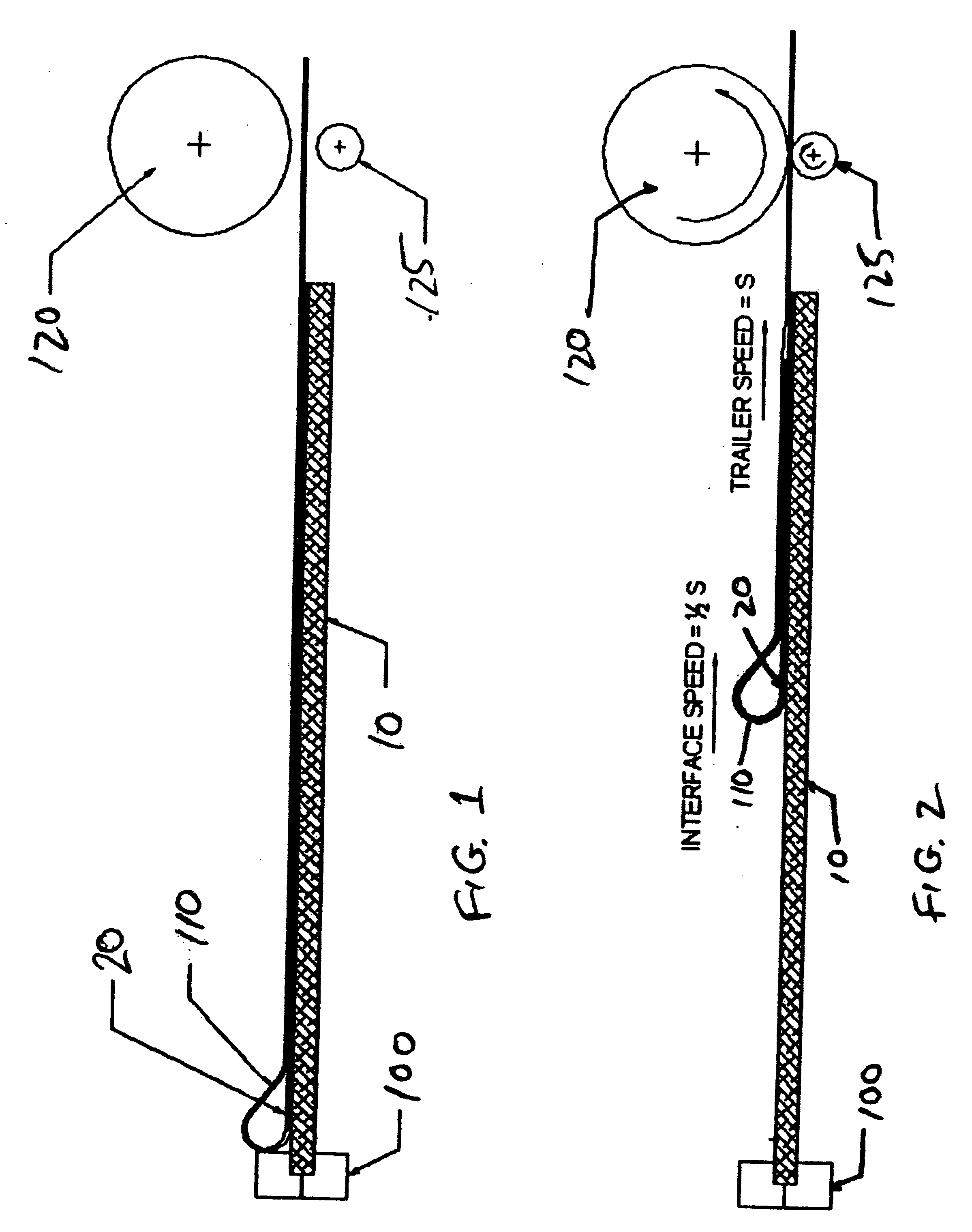Heat spreader for plasma display panel
a plasma display panel and heat spreader technology, which is applied in the direction of identification means, electrical apparatus casings/cabinets/drawers, instruments, etc., can solve the problems of accelerating the thermal deterioration of affected discharge cells, prone to cracks and breakage of conventional plasma display panels, and difficult heat conduction in parallel directions to the panel fa
- Summary
- Abstract
- Description
- Claims
- Application Information
AI Technical Summary
Benefits of technology
Problems solved by technology
Method used
Image
Examples
example 1
High speed release liner tests were performed using a ChemInstruments HSR-1000 high speed release tester. The test conditions were such that the drive wheel speed was set at 400, 800 feet / minute, a release angle of 180 degrees, surface release speed of 40, 80 inches / second, a spreader release rate of 0.5, 0.25 seconds and a sample size of 2 inches by 8 inches.
The diagram of the high speed release test is shown in FIG. 1. The release liner 20 is peeled back slightly from one end exposing of the sample exposing the graphite heat spreader 10 and the release liner 20. The exposed end of the graphite 10 is firmly held in place with a clamp 100 while a paper trailer 110 is attached to the free end of release liner 20. Paper trailer 110 is then double backed on itself and is fed between a drive wheel 120 and an idler wheel 125. The test involves driving the drive wheel 120 at a set speed and pressed against paper trailer 20, which is supported by idler wheel 125 illustrated in FIG. 2. T...
example 2
Lap shear adhesion tests were performed using Chem Instruments TT-1000 tensile tester. Test conditions were set such that crosshead speed is 0.5 inches / minute, lap shear area size is 1″ by 1″. eGraf specimen size was 1″ wide by 4″ long. Test substrate material glass and test substrate size 2″ wide by 4′ long. Specimens were die cut from each sample shear after affixing the sample to the glass substrate, a 1,000 gram weight was applied to the graphite / glass joint on the graphite side for 20 minutes prior to testing. No other forces were applied to the joint.
Samples were assembled in the tensile tester with the glass substrate located in the upper jaw and the sample located in the lower jaw. Tests were conducted at a crosshead speed of 0.5″ per minute. Maximum lap shear were obtained for each sample and are summarized in table II.
As shown in Table II, 100 samples of eGraf 755 graphite heat spreader coated with Aroset 3250 adhesive were tested, along with 10 samples of eGraf 755 h...
example 3
Probe tack tests were performed using a ChemInstruments PT-1000 Probe Tack Tester. Probe tack measures the initial “grab” of the adhesive on a substrate under no load conditions. Probe tack loads were obtained for samples of eGraf 755 graphite heat spreader coated with Aroset 3250 adhesive and Aroset 3300 adhesive, respectively and the results are summarized in Table III.
As shown in Table III, Probe Tack Tests were carried out on 26 samples coated with Aroset 3250 adhesive and 16 samples coated with Aroset 3300 adhesive. The Aroset 3250 samples came from 3 spreaders while the Aroset 3300 samples came from 2 spreaders. The average of the Probe tack loads for the Aroset 3250 adhesive coated samples was 23 grams while the average for the Aroset 3300 adhesive coated samples was 19.1 grams. The standard deviation for the Aroset 3250 coated samples was 10.5 grams while that for the Aroset 3300 adhesive coated samples was 9.0 grams, indicating that on average, there is a 17% reduction i...
PUM
| Property | Measurement | Unit |
|---|---|---|
| speed | aaaaa | aaaaa |
| release speed | aaaaa | aaaaa |
| thickness | aaaaa | aaaaa |
Abstract
Description
Claims
Application Information
 Login to View More
Login to View More - R&D
- Intellectual Property
- Life Sciences
- Materials
- Tech Scout
- Unparalleled Data Quality
- Higher Quality Content
- 60% Fewer Hallucinations
Browse by: Latest US Patents, China's latest patents, Technical Efficacy Thesaurus, Application Domain, Technology Topic, Popular Technical Reports.
© 2025 PatSnap. All rights reserved.Legal|Privacy policy|Modern Slavery Act Transparency Statement|Sitemap|About US| Contact US: help@patsnap.com



